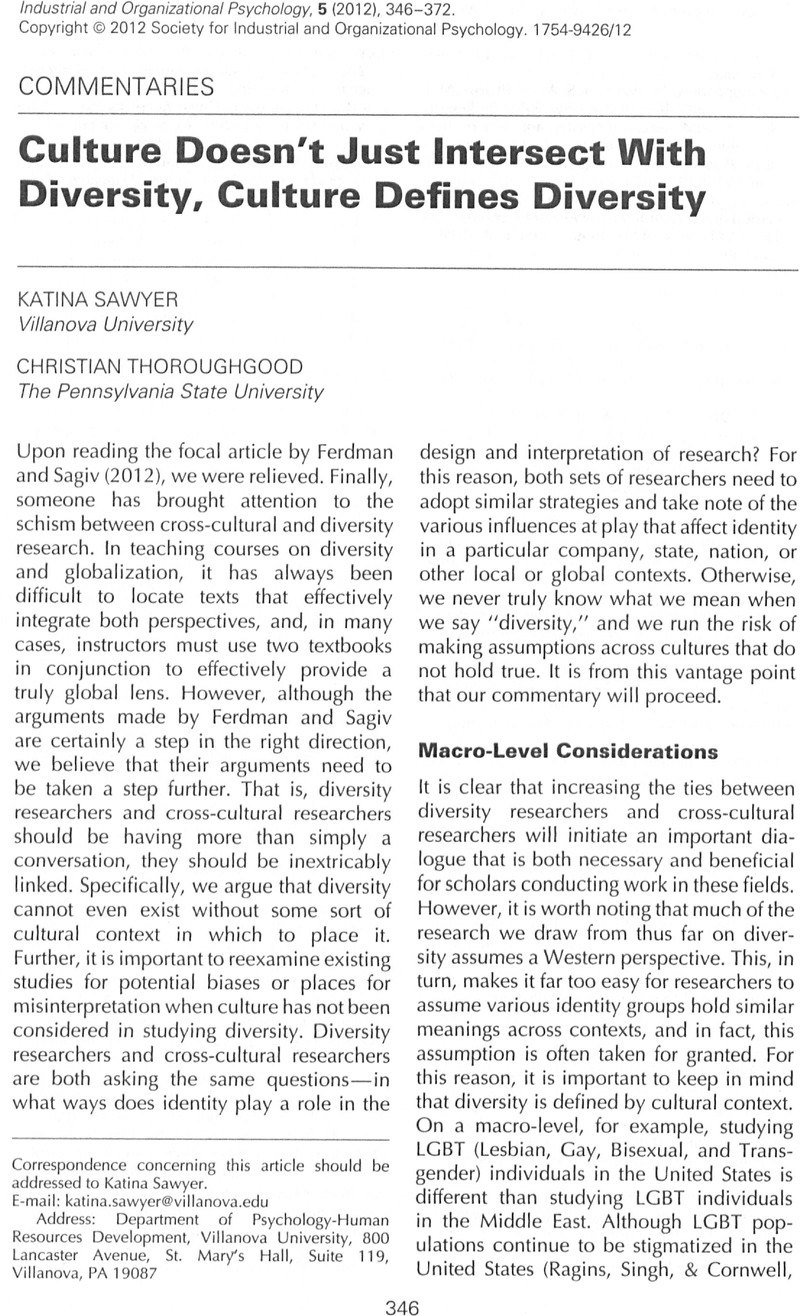Crossref Citations
This article has been cited by the following publications. This list is generated based on data provided by Crossref.
Ferdman, Bernardo M.
and
Sagiv, Lilach
2012.
The Value of Connecting Diversity in Organizations and Cross-Cultural Work Psychology Through Dialogue and Multiplicity.
Industrial and Organizational Psychology,
Vol. 5,
Issue. 3,
p.
373.
Barmeyer, Christoph
Romani, Laurence
and
Pilhofer, Katharina
2015.
Handbuch Diversity Kompetenz: Gegenstandsbereiche.
p.
1.
Hennekam, Sophie
and
Tahssain-Gay, Loubna
2015.
Changing attitudes towards diversity: The Netherlands and Morocco compared.
Management Decision,
Vol. 53,
Issue. 9,
p.
2135.
Barmeyer, Christoph
Romani, Laurence
and
Pilhofer, Katharina
2016.
Handbuch Diversity Kompetenz: Gegenstandsbereiche.
p.
1.
Barmeyer, Christoph
Romani, Laurence
and
Pilhofer, Katharina
2016.
Handbuch Diversity Kompetenz.
p.
63.
Hennekam, Sophie
Tahssain‐Gay, Loubna
and
Syed, Jawad
2017.
Contextualising diversity management in the Middle East and North Africa: a relational perspective.
Human Resource Management Journal,
Vol. 27,
Issue. 3,
p.
459.
Tahssain-Gay, Loubna
Benraïss-Noailles, Laïla
and
Hennekam-Treguier, Sophie
2019.
Enjeux des dimensions culturelles dans le management de la diversité au sein des multinationales aux Pays-Bas et au Maroc.
Management & Sciences Sociales,
Vol. N° 27,
Issue. 2,
p.
64.
Louahabi, Younes
Moustaghfir, Karim
and
Cseh, Maria
2020.
Testing Hofstede’s 6-D model in the North and Northwest regions of Morocco: Implications for human resource development.
Human Systems Management,
Vol. 39,
Issue. 1,
p.
105.
Yeung, Edward
and
Shen, Winny
2020.
Diversity climate promises in ideological psychological contracts: racial differences in responses to breach and fulfilment.
European Journal of Work and Organizational Psychology,
Vol. 29,
Issue. 2,
p.
262.
Palalic, Ramo
and
Ait Sidi Mhamed, El Mustapha
2020.
Transformational leadership and MNCs: evidence from Morocco community.
Journal of Enterprising Communities: People and Places in the Global Economy,
Vol. 14,
Issue. 2,
p.
201.
Maidment, Jane
2022.
Mapping Theory–Practice Integration: A Model from Aotearoa New Zealand.
The British Journal of Social Work,
Vol. 52,
Issue. 4,
p.
1820.
Ganji, Seyedeh Fatemeh Ghasempour
Rahimnia, Fariborz
Ahanchian, Mohammad Reza
and
Syed, Jawad
2023.
A qualitative study of diversity management practices in Iran's private sector organizations.
Equality, Diversity and Inclusion: An International Journal,
Vol. 42,
Issue. 7,
p.
903.



